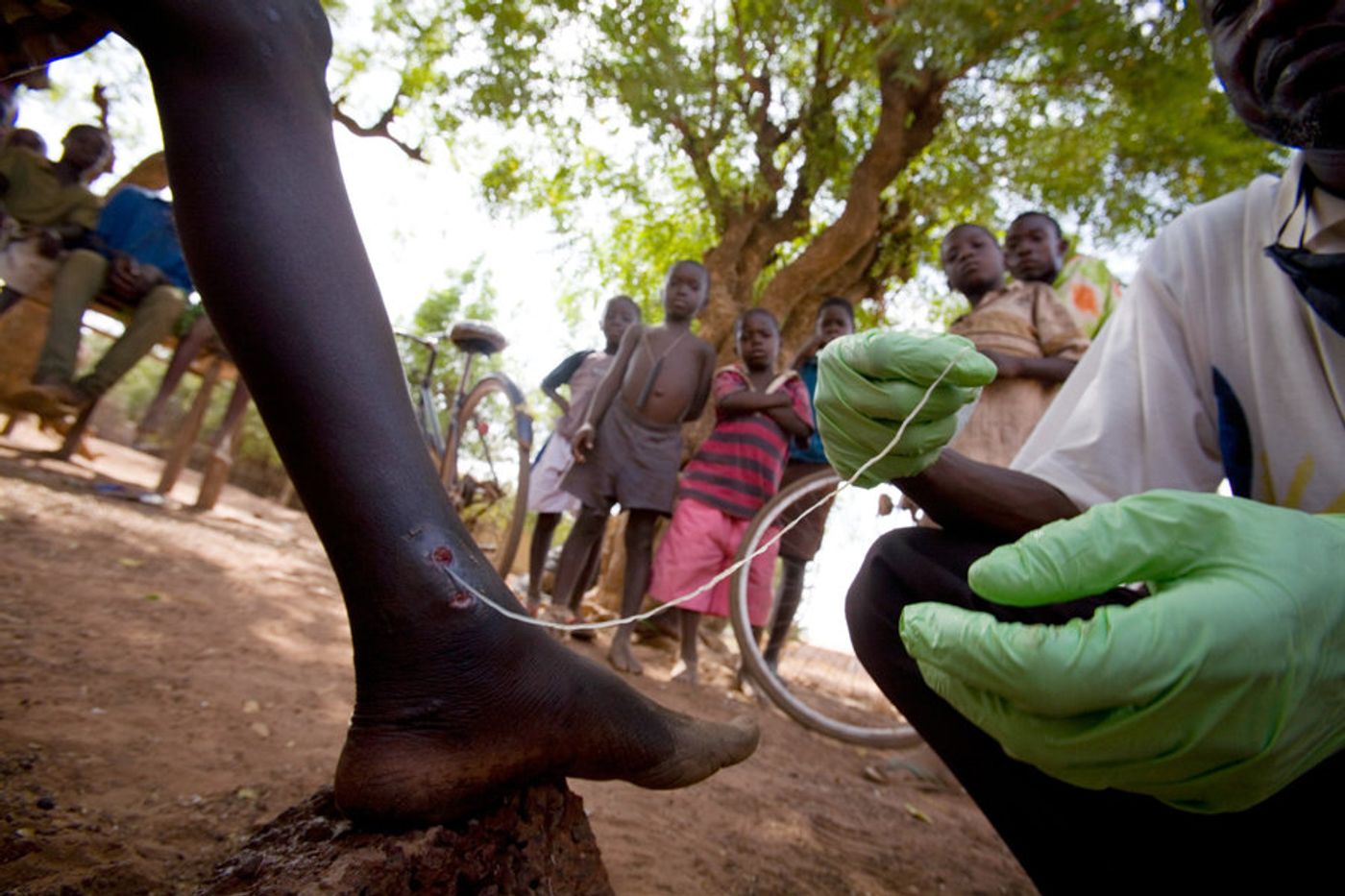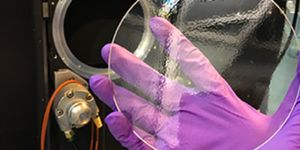Guinea worm eradication, worth it?
With eradication within reach, a new study analyzes the cost-effectiveness of eradicating Guinea worm disease.
Guinea worm disease is caused by the parasitic helminth Dracunculus medinensis. D. medinensis is a nematode worm that has plagued humans for thousands of years - it was first described in an Egyptian papyrus from 1500 BC, and worms have even been found preserved in mummies.
Image: Getty Images
The nematode larvae are carried by water fleas (Cyclops), and these water fleas are ingested by people when drinking contaminated water. (Guinea worm is most common in poor, remote areas or conflict zones.) The larvae then mature into adult worms, which reside in subcutaneous connective tissue. Eventually, adult female worms emerge, usually from the leg or foot, causing an extreme burning sensation. This prompts the victim to submerge the limb in water - usually a source of drinking water - releasing a new crop of larvae. Thus, the cycle begins again.
The Guinea Worm Eradication Programme (GWEP) launched in the 1980s and focuses on educating people about the parasite and helping communities maintain clean drinking water. In their study, Christopher Fitzpatrick and colleagues at the World Health Organization modeled the cost-effectiveness of the GWEP for the years 1986 - 2030.
The numbers don’t lie, the GWEP has certainly been effective - there were only 22 cases reported in 2015 and 25 reported in 2016. Compare this to the 3.5 million cases that occurred annually in 21 countries in 1986! But what about the cost?
The World Bank estimates that as of 2004, US$125 million had been spent on the GWEP, and US$53.5 million were earmarked through the year 2010. Trouble is, this is at least twice the cost originally estimated by the World Bank. Fitzpatrick’s study puts these numbers into perspective by comparing the GWEP to 2 other scenarios - no intervention (since 1986) and a control (intervention only between 2016-2030).
They found that the average cost of implementing GWEP is US$0.0176 per capita per year, and the average costs of the pre-certification and certification phases are US$0.0041 and US$0.0015 per capita per year, respectively. (Certification refers to the process of surveillance to certify that a disease is eradicated.) Overall, they estimate that the cost of the GWEP from 1986-2020 is US$432 million.
When compared to their no intervention and control scenarios, they found that the cost per disability adjusted life year averted by the GWEP compared to doing nothing was US$222 (For 1986-2030). They also found that the GWEP is more cost-effective than the control scenario if the willingness to pay for one year of life lived without the risk of Guinea worm disease is greater than US$0.10.
Thus, the authors conclude that “the GWEP continues to be highly cost-effective in the period 1986-2030. Even if economic costs are two times as high as the financial costs estimated for the period to 2020, the GWEP will still be cost-effective relative to doing nothing.”
Sources: PLOS Neglected Tropical Diseases, Microbiology Bytes, Science Daily, and WHO









